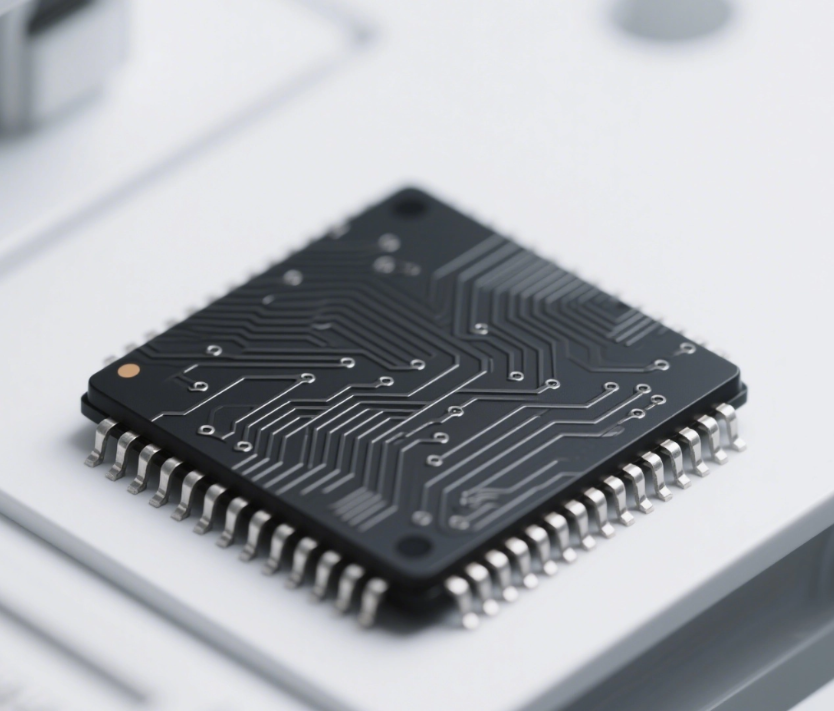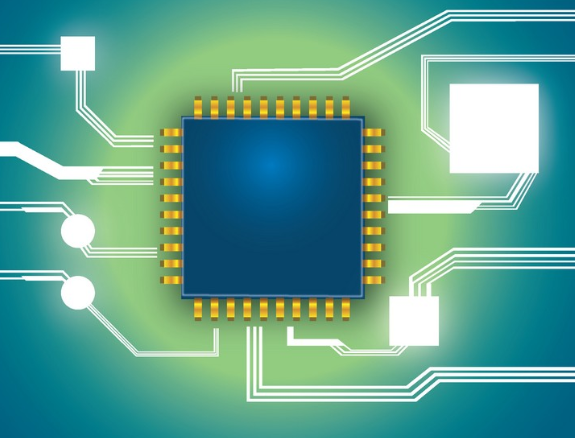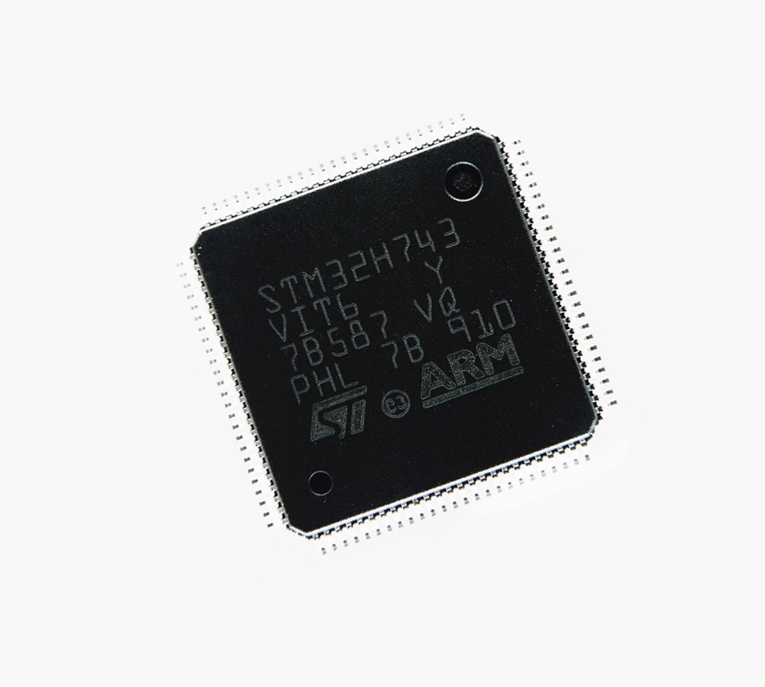Main Types of Electronic Components
Electronic components are specialized elements placed in circuits. A circuit is like a pathway for electric current. These components help current flow, stop, or change direction. You can find electronic components in toys, phones, and even cars. Understanding the types of electronic components allows you to build many things.
We use electronic components to make devices function. Without them, your toys, lights, and phones wouldn't move or produce sound. You need to understand components like resistors, capacitors, and transistors. With this knowledge, you can repair, assemble, or even create cool projects.
All electronic components fall into two broad categories: passive components and active components.
Passive Components
Passive components cannot amplify power. They only slow down, store, or block current. Resistors and capacitors are examples of passive components.
Passive components form the foundational elements of electronic circuits, shaping current and voltage flow without introducing amplification. The three most basic passive components are resistors, capacitors, and inductors. While their behavior is relatively simple at low frequencies, their characteristics become significantly more complex at high frequencies due to parasitic effects.

Resistors
Resistors are designed to impede current flow and dissipate electrical energy as heat. Their primary parameter is resistance, measured in ohms (Ω). At DC and low frequencies, a resistor's behavior is determined by its physical size and material resistivity. However, at higher frequencies, resistors exhibit parasitic inductance and capacitance. Parasitic inductance arises from the path of current through the resistor material and its leads, while parasitic capacitance exists between the terminals. These parasitic effects cause resistors to behave as complex frequency-dependent impedances, deviating from their ideal resistance value. This frequency dependency can lead to unwanted coupling and delayed responses in high-frequency circuits. Self-inductance distorts signals, while mutual inductance introduces noise. Time constants derived from parasitic inductance (L) and capacitance (C), along with nominal resistance (R), become critical in determining a component's high-frequency response. Above the self-resonant frequency (SRF), parasitic inductance and capacitance resonate, with inductive effects typically dominating. To mitigate these effects in high-frequency applications, surface-mount resistors (SMT) are often preferred over through-hole components due to their lower lead inductance. Specialized low-inductance resistors are also available.
Capacitors
Capacitors store energy in an electric field. Their primary parameter is capacitance, measured in farads (F). An ideal capacitor blocks DC current and allows AC current to pass, with its impedance inversely proportional to frequency. However, real capacitors exhibit parasitic effects, most notably equivalent series resistance (ESR) and equivalent series inductance (ESL). ESR represents the total resistance in series with the capacitance, including lead, electrode, and dielectric material resistance. ESL arises from the inductance of the capacitor's leads and internal structure. At high frequencies, a capacitor's impedance decreases until ESL dominates, causing the component to behave inductively above its SRF. The Q-factor quantifies the impact of losses in capacitors, with ESR being the primary contributor. High-frequency ceramic capacitors with low ESL are essential for effective decoupling in high-speed digital and RF circuits.
Inductors
Inductors store energy in a magnetic field. Their primary parameter is inductance, measured in henries (H). An ideal inductor allows DC current to pass freely while resisting changes in AC current, with its impedance proportional to frequency. However, real inductors have parasitic series resistance (due to wire resistance) and parasitic parallel capacitance (due to inter-winding capacitance). The series resistance is often referred to as ESR, especially at high frequencies where the skin effect becomes significant. The skin effect causes current to flow primarily near the conductor's surface at high frequencies, increasing effective resistance. For example, at 10 GHz, the skin depth in copper is only about 930 nm. Parasitic parallel capacitance resonates with inductance at the SRF, above which the component behaves capacitively. For optimal performance, inductors should have low ESR and an SRF well above the operating frequency. The Q-factor is also a critical parameter for inductors, representing the ratio of reactance to resistance and indicating the inductor's efficiency.
Understanding and modeling these parasitic effects is crucial for precise high-frequency circuit design. Datasheets often provide impedance vs. frequency curves, and simulation tools are widely used to analyze parasitic effects. Mitigation strategies include careful component selection, optimizing PCB layouts to minimize trace inductance and capacitance, and strategic use of decoupling capacitors and filtering inductors.
Active Components
Active components can amplify power. They control current flow. Transistors and diodes are examples of active components.
Active components, primarily semiconductor devices, are fundamental building blocks for controlling and amplifying electrical signals. Unlike passive components, they require an external power source to function and can introduce energy into a circuit. The most common types are diodes and transistors.
Diodes
Diodes are two-terminal devices that, ideally, allow current to flow in only one direction. The basic type is the p-n junction diode, formed by joining p-type and n-type semiconductor materials. Diodes are widely used for rectification (converting AC to DC), voltage regulation (in combination with other components), signal demodulation, and circuit protection.
Several specialized diode types exist:
- Zener diodes: Designed to operate in the reverse breakdown region, providing a stable voltage reference for regulation applications.
- Schottky diodes: Utilize a metal-semiconductor junction, offering very fast switching speeds and low forward voltage drop, making them ideal for high-frequency rectification and switching power supplies.
- Light-emitting diodes (LEDs): Emit light when forward-biased, widely used in lighting, displays, and indicators.
- TVS (transient voltage suppressor) diodes: Designed to protect circuits from voltage spikes and electrostatic discharge (ESD) events.
Transistors
Transistors are three-terminal semiconductor devices capable of amplifying or switching electronic signals. They are fundamental to modern electronics. The two main families are bipolar junction transistors (BJTs) and field-effect transistors (FETs).
Bipolar Junction Transistors (BJTs)
These are current-controlled devices, meaning a small current applied to the base controls a larger current flow between the collector and emitter. BJTs come in two types: NPN and PNP. NPN transistors generally offer higher speed and efficiency due to electron mobility being higher than hole mobility. BJTs are commonly used in amplification circuits and as switches, particularly in applications requiring gain or slower switching speeds, such as motor controllers or simple relays. BJTs have three primary operating modes: active (for amplification), cutoff (off state), and saturation (on state). An example is the ON Semiconductor MBT3946DW1T1G BJT, with a typical gain of 100 at 10mA and 1V, and a maximum power dissipation of 150mW.
Field-Effect Transistors (FETs)
These are voltage-controlled devices, where a voltage applied to the gate controls current flow between the drain and source. FETs offer high input impedance and low power consumption.
- Junction Field-Effect Transistors (JFETs): Among the earliest FET types, controlled via a reverse-biased p-n junction gate.
- MOSFETs (Metal-Oxide-Semiconductor FETs): The most common transistor type today, widely used in analog and digital circuits. Standard MOSFETs act as voltage-controlled switches. N-channel depletion-mode MOSFETs, for instance, conduct current by default and can be turned off with a negative gate voltage, making them suitable for analog circuits and fail-safe designs. MOSFETs are better suited for fast, efficient switching applications like motor speed controllers, digital timers, or power supply circuits. CMOS technology, combining N-channel and P-channel MOSFETs for low-power operation, is ubiquitous in digital logic.
- Power MOSFETs: Specially designed to handle high currents and voltages, with low thermal resistance and fast switching speeds. They are widely used in power supplies, motor drives, and switching regulators.
- IGBTs (Insulated-Gate Bipolar Transistors): These combine the high input impedance of MOSFETs with the low on-resistance and high current/voltage handling of BJTs. IGBTs are ideal for high-power applications like inverters and motor drives.
Thyristors
Thyristors are another class of discrete semiconductor devices characterized by a four-layer structure. They primarily act as switches in high-power applications, remaining "on" once triggered until current drops below a holding level.
BJTs, MOSFETs, and IGBTs are critical discrete power devices in motor control systems, regulating speed and torque in various applications. Overall, semiconductor devices offer advantages like instantaneous operation, noiseless performance, and efficient low-voltage operation. They are also vital in high-voltage applications like solar inverters and wind turbine converters in renewable energy systems. Some diodes are designed for harsh environments, with temperature ranges up to 175°C.
Integrated Circuits (ICs)
Integrated circuits are like miniature power cities, packing numerous components into a tiny space.
ICs are broadly categorized by their functional purpose:
Analog ICs
These circuits are designed for processing continuous signals that vary smoothly over time, such as voltage or current. They are fundamental for tasks like amplification, filtering, signal conditioning, and comparison. Examples include operational amplifiers (op-amps), voltage regulators, and comparators. Analog ICs are essential in audio amplifiers, precision instruments, and sensor interfaces.
Digital ICs
These circuits operate on discrete voltage levels representing binary values (0 and 1). They form the backbone of modern computing and digital systems, performing logic operations, data processing, and storage functions. Key examples include logic gates (AND, OR, NOT), flip-flops, microprocessors, microcontrollers, and memory devices. Digital ICs are classified by complexity, from simple logic gates to highly complex processors.
Mixed-Signal ICs
These chips combine analog and digital circuits on a single substrate, enabling conversion and interaction between continuous analog and discrete digital signals. They are crucial in systems that interface with the real world (analog signals) while processing information digitally. Examples include analog-to-digital converters (ADCs), digital-to-analog converters (DACs), phase-locked loops (PLLs), and RF transceivers. Mixed-signal ICs are widely used in telecommunications (e.g., in smartphones converting voice to digital signals), data conversion, sensor interfacing, and control systems.
Memory ICs
These are specialized for storing data and program instructions. They are integral to every computing system. Types include read-only memory (ROM), random-access memory (RAM), and various forms of flash memory like EEPROM.
Microprocessors (µPs)
These are highly complex digital ICs serving as the central processing unit (CPU) in computers and other digital devices. They execute instructions, perform calculations, and manage overall system operation. Modern microprocessors often integrate multiple processing cores on a single chip.
Microcontrollers (µCs)
These ICs integrate a microprocessor core with on-chip memory and various peripheral interfaces (e.g., timers, ADCs, communication modules). This makes them self-contained computing systems ideal for embedded applications and IoT devices.
Power Management ICs (PMICs)
These are specially designed to regulate, distribute, and control power within electronic devices. They are critical for efficient energy use and battery management in portable devices.
Other Important Component Types
Sensors
Sensors detect physical phenomena like heat, light, or touch and send signals.
- Temperature sensors
- Light sensors
- Pressure sensors
Switches
Switches act like light buttons to start or stop power flow.
- Push-button switches
- Toggle switches

Relays
Electromechanical switches controlled by electrical signals.
Connectors
Connectors act as bridges to link parts or circuit boards.
- Header pins
- Terminal blocks
- USB connectors
- HDMI connectors
Global Electronic Components Market
| Category | Value/Information |
|---|---|
| Market Size | $500-600 billion |
| Largest Segment | Semiconductors (ICs) (80-85%) |
| Growth Rate (CAGR) | 5-7% |
| Hotspots | Asia-Pacific, North America, Europe |
| Most Manufactured Passive | Ceramic capacitors |
| Most Manufactured Active | Transistors, diodes, microcontrollers |
| Key Industries | Automotive, IoT, 5G, AI, Industrial |
Future Trends in Electronic Components
The field of electronic components is evolving continuously, driven by demands for higher performance, efficiency, miniaturization, and novel functionalities. Several key trends and emerging technologies are poised to shape the future of electronic systems.
A significant trend is the ongoing advancement and adoption of wide-bandgap (WBG) semiconductors, particularly GaN and SiC, in power electronics. While SiC is expected to dominate high-voltage applications (>600V), GaN is rapidly improving, with 1200V GaN technology emerging to compete in high-power domains. Future developments include further integration of control and protection circuits into GaN power ICs, and potential cost reductions through the transition to 8-inch SiC wafers. Speculatively, novel integration techniques like 3D stacking of GaN transistors on silicon CMOS could enable highly integrated power management solutions.
In high-frequency electronics, the push toward millimeter-wave and sub-terahertz frequencies for next-generation wireless communications (6G and beyond) and advanced radar/imaging systems will drive innovation in RF components. Overcoming challenges related to signal loss, power efficiency, and integration will require new transceiver architectures and component designs. Emerging technologies like plasmonics and metamaterials are being explored for novel high-frequency components, such as transmission lines, filters, and antennas leveraging spoof surface plasmon polaritons (SSPPs). The growing complexity of designing these high-frequency circuits is also leading to increased adoption of AI and machine learning.
For many new engineers or procurement professionals, a common challenge is sourcing bulk quantities of high-quality components at reasonable prices. Some suppliers offer subpar quality, while others provide incorrect part numbers. Wrong components can damage circuits.
Solution: HK EQGOO LIMITED
This company provides wholesale components and BOM (bill of materials) services to meet all needs. Their products are sourced directly from original manufacturers, adhering to strict standards to ensure component accuracy. After all, no one wants production issues. If you seek a reliable partner, HK EQGOO LIMITED is worth considering.
You can explore the following:
Quick Reference: Basic Electronic Components List
- Resistors
- Fixed resistors
- Variable resistors (potentiometers)
- Trimmer potentiometers
- Capacitors
- Electrolytic capacitors
- Ceramic capacitors
- Film capacitors
- Tantalum capacitors
- Inductors
- Air-core inductors
- Ferrite-core inductors
- Toroidal inductors
- Diodes
- Rectifier diodes
- Zener diodes
- LEDs
- Photodiodes
- Schottky diodes
- Transistors
- Bipolar junction transistors (BJTs)
- Field-effect transistors (FETs)
- Insulated-gate bipolar transistors (IGBTs)
- Integrated Circuits
- Logic gates
- Operational amplifiers
- Memory chips
- Microcontrollers
- Microprocessors
- Other Components
- Switches (push-button, toggle, DIP)
- Connectors (USB, HDMI, header pins)
- Sensors (temperature, light, pressure)
- Fuses, relays, circuit breakers



